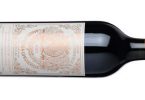I had a big treat in the middle of the month: I went down to Noilly Prat in Marseillan. The vermouth is made near Sète on the southern French coast and they are currently celebrating their bicentenary. It wasn’t my first visit, but in my senility I find it hard to put my finger on when I was there last, a British Airways boarding card wedged into the Histoire ancienne et moderne de Marseillan tells me only that I came back on 18 September. The year is not specified, and I travelled in Club – those were the days!
Noilly Prat

Written by Giles MacDonogh






